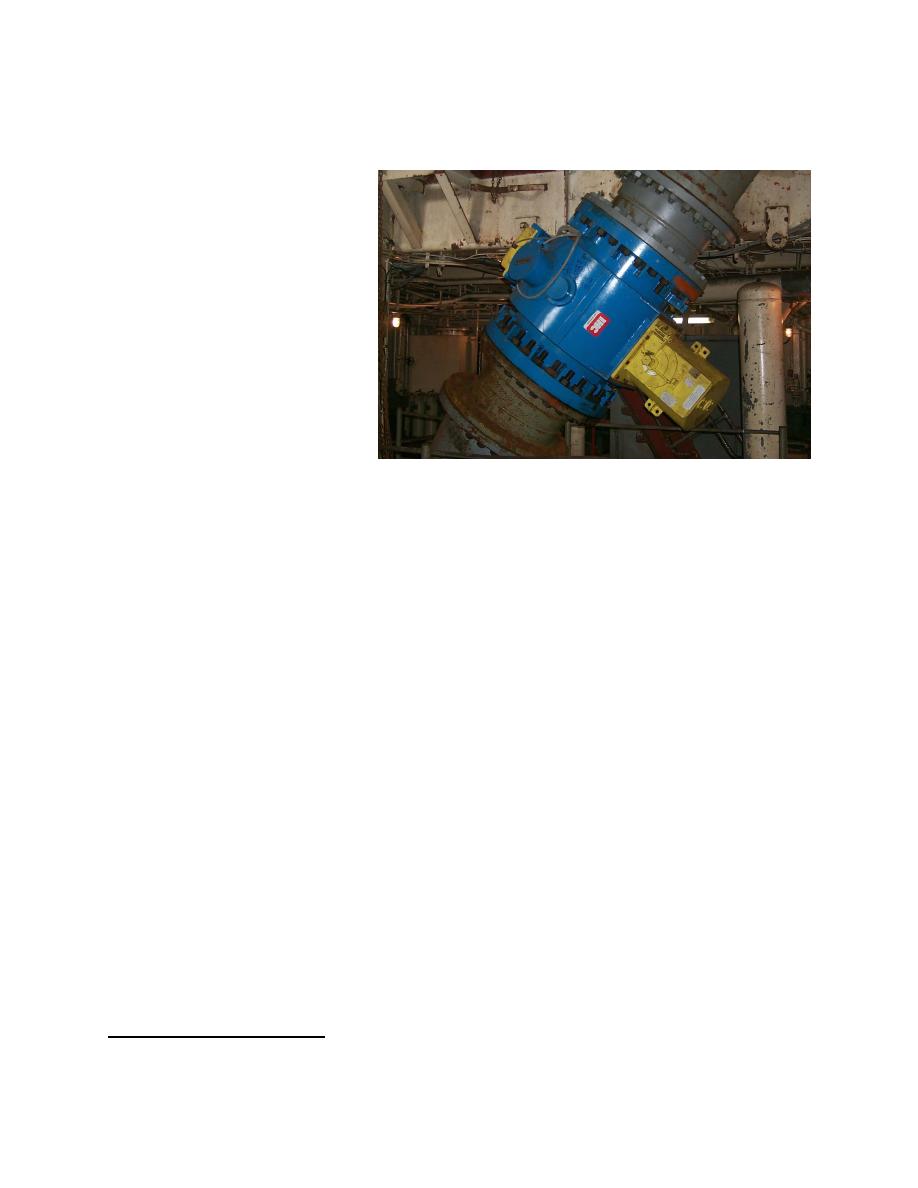 |
||
|
|
||
|
Page Title:
MEASUREMENT IN THE PIPELINE (cont.) |
||
| |||||||||||||||
|
|
 ERDC TN-DOER-T6
September 2004
A Nuclear Regulatory Commission (NRC) license is required to supervise the use of the nuclear
density gauge (Herbich et al. 1992).
This production metering system
has a number of different output
indicators, but usually features a
display combining both slurry
velocity and slurry density. The
data from the flow meter (which
measures the total rate of slurry
flow), and the density meter
(which measures the specific
gravity of the pumped mixture)
are fed into the production
metering system. It indicates the
instantaneous total rate of solids
flow per unit time in a variety of
output parameters per unit time
i.e., cubic meters (or yards) per
hour, tons per hour, etc. It can also include a `totalizer,' which gives a continuous indication of
total production (project total or shift total), eliminating the need for post-operation computations
to determine the total production (Herbich et al. 1992). The capability to calculate instantaneous
and total quantities allows dredge production meter values to be used as an aid in optimizing
dredge operation and production (Pankow 1989). These capabilities allow it to be integrated into
an automated monitoring system i.e., the Silent Inspector (Rosati and Prickett 2001).
ERDC conducted laboratory studies (Pankow 1989) on production meter components. Several
density gauges and flow meters manufactured by different companies were evaluated for
accuracy and reliability in a closed test loop. Different grain-size materials, slurry
concentrations, and velocity regimes were utilized for the study. General conclusions from the
study were:
Doppler.
Readings among the density gauges and the control density meter were almost identical.
Readings among the magnetic flowmeters and the control flow meter were very similar.
Readings among the Doppler flowmeters and the control flowmeter were significantly
different.
The preferred pipe orientation for both density gauge and flowmeter is vertical, but a
horizontal pipe is acceptable by avoiding high slurry concentrations that produce a stationary
or sliding bed with dune formation. The difference between vertical and horizontal
orientation is on the order of 1 percent for the density gauge, 3 percent for the magnetic
flowmeters, and 5 percent for the Doppler flowmeters.
1
Accuracy is defined here as the agreement between a measurement and an accepted reference value that, when
applied to a set of measurements, involves a combination of random and systematic components.
3
|
|
Privacy Statement - Press Release - Copyright Information. - Contact Us - Support Integrated Publishing |